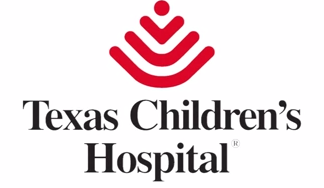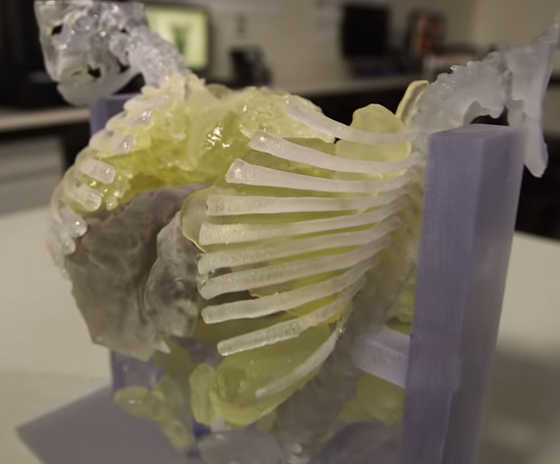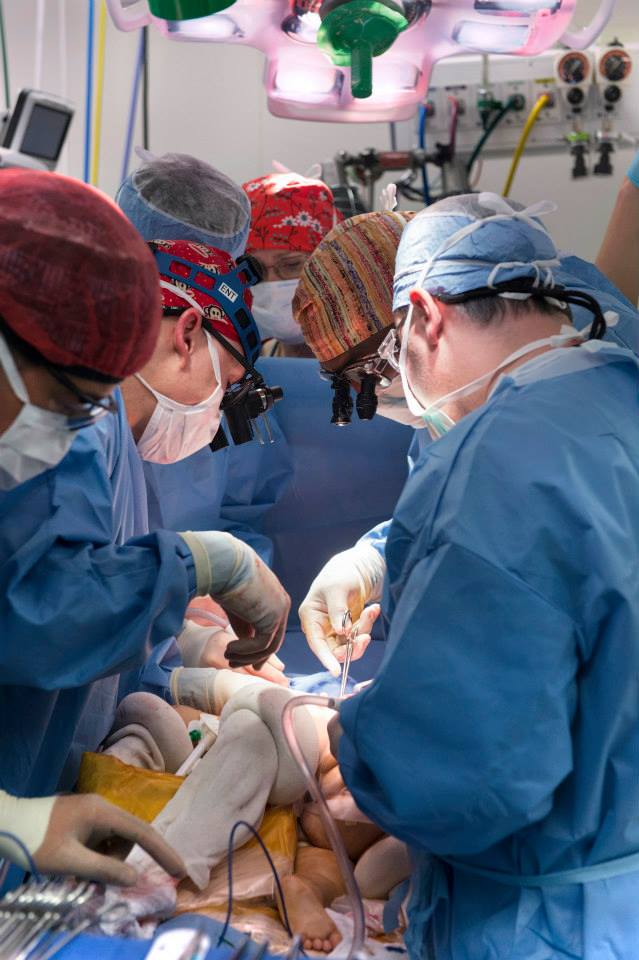I’ve always been fairly close with my family — including three older sisters — but I’d never say that we were attached at the hip. For some, though, that is more than a sweet hyperbole denoting a strong bond; some siblings are literally attached at the hip. Conjoined twins, though fortunately not headlining anymore in circus sideshows, are still relatively rare to see, especially as they get older.
Statistics regarding conjoined twins are fairly depressing. While the occurrence of joint twins — in which a  developing embryo begins the split into identical twins, but doesn’t complete the split, leaving some form of physical attachment between the two fetuses — is approximately 1 in every 200,000 live births, the expectations for life are even more dismal. Certain estimates, such as those from the University of Maryland, peg overall survival rates at just 5-25% of all conjoined twins, with 40-60% having been stillborn and 35% of live births surviving just one day. For those who beat these odds and survive, there are options for separation in some cases. These cases, though, typically require healthy twins who are not connected in such places as the head, heart, or spine, as each individual needs one of each of these to survive.
developing embryo begins the split into identical twins, but doesn’t complete the split, leaving some form of physical attachment between the two fetuses — is approximately 1 in every 200,000 live births, the expectations for life are even more dismal. Certain estimates, such as those from the University of Maryland, peg overall survival rates at just 5-25% of all conjoined twins, with 40-60% having been stillborn and 35% of live births surviving just one day. For those who beat these odds and survive, there are options for separation in some cases. These cases, though, typically require healthy twins who are not connected in such places as the head, heart, or spine, as each individual needs one of each of these to survive.
In January 2013, Elysse Mata learned that she was carrying twin girls — and they were probably conjoined. Elysse and her husband, John, already have a healthy 5-year-old son, Azariah. When they heard about his younger sisters’ situation, the family moved closer to Texas Children’s Hospital, where they discovered they could receive appropriate care throughout the rest of the pregnancy and after the girls were born.
“I was scared,” Elysse Mata said of the news during her pregnancy. “What if there is one heart and not two? Once we found out there was a separate everything, there was a big sigh of relief.”
 In April, at 31 weeks, the girls were born via Cesarean section, alive and healthy, if conjoined, at 3 pounds, 7 ounces. The family soon began planning for the girls’ health and future — which included the possibility of separating them. The twins, Knatalye Hope and Adeline Faith, were connected at the torso, sharing a chest, abdomen, and pelvis. Knatalye and Adeline shared organs, as well, which could have been problematic to the complex procedure required to separate t
In April, at 31 weeks, the girls were born via Cesarean section, alive and healthy, if conjoined, at 3 pounds, 7 ounces. The family soon began planning for the girls’ health and future — which included the possibility of separating them. The twins, Knatalye Hope and Adeline Faith, were connected at the torso, sharing a chest, abdomen, and pelvis. Knatalye and Adeline shared organs, as well, which could have been problematic to the complex procedure required to separate t hem — each girl would need her own fully functional lungs, liver, colon, and intestines, so figuring out how to provide that to each appropriately required significant pre-planning on the part of the medical team. Fortunately, specialists were planning for this procedure before the twins were even born — and they had technology on their side.
hem — each girl would need her own fully functional lungs, liver, colon, and intestines, so figuring out how to provide that to each appropriately required significant pre-planning on the part of the medical team. Fortunately, specialists were planning for this procedure before the twins were even born — and they had technology on their side.
The procedure on the 10-month-old girls was scheduled to begin on the morning of February 17th. It was to be the first such operation in Houston in about 20 years, and was a far more complicated case than the most recently performed surgeries of that type back in the ’90s.
Such a complex procedure certainly required significant prep work, and one of the most critical pieces to the pre-planning came in the form of a 3D printed model that showed the medical team exactly what they were dealing with. A medical model was produced in less than a week, requiring three days of radiology imaging to create the models and then three days of 3D modeling and printing in Dallas. The model showed in great detail Knatalye and Adeline’s heart, lungs, stomach, and kidneys inside their rib cage — such fine detail, in fact, the transparent liver model shows the blood vessels.
“This type (3D) of surgical planning becomes very important when you decide to assign an organ to one twin or the other,” Dr. Rajesh Krishnamurthy, Chief of Radiology Research and Cardiac Imaging at Texas Children’s Hospital, said in a video recently released by the hospital. “Having a 3D printed model gives you an insight into what you’re going to encounter. The model goes into a fair degree of detail.”
 In addition to the 3D model, surgeons also prepared for the major operation with clear step-by-step planning. Back in December, in anticipation of their soon-to-be-separated status, the twins were prepared in a 5-hour-long procedure with tissue expanders implanted into their torsos. The expanders provided for a slow expansion of their chest and abdominal areas’ skin, stretching it to allow for the extra skin they would need once separated. In addition to the direct work on the girls, surgeons undertook a 5-hour-long surgery simulation for the final separation procedure. They were thus well-prepared for the marathon procedure once mid-February hit.
In addition to the 3D model, surgeons also prepared for the major operation with clear step-by-step planning. Back in December, in anticipation of their soon-to-be-separated status, the twins were prepared in a 5-hour-long procedure with tissue expanders implanted into their torsos. The expanders provided for a slow expansion of their chest and abdominal areas’ skin, stretching it to allow for the extra skin they would need once separated. In addition to the direct work on the girls, surgeons undertook a 5-hour-long surgery simulation for the final separation procedure. They were thus well-prepared for the marathon procedure once mid-February hit.
A quick by-the-numbers look at the girls’ surgical care includes:
- 13 specialties involved in the planning including, among others:
- pediatric surgery
- plastic surgery
- cardiovascular surgery
- urology
- liver transplant surgery
- orthopedic surgery
- pediatric gynecology
- More than 26 clinicians including:
- 12 surgeons
- 6 anesthesiologists
- 8 surgical nurses
- Nearly 30 hours of surgery, with:
- separation occurring about 18 hours into the procedure
- 23 hours of surgery on Knatalye
- 26 hours of surgery on Adeline
When all was said and done, the twins were separated. The operation had its tense moments, such as when Adeline’s blood pressure dropped dangerously low for several minutes, but ultimately both girls made it out of the operating room — each on her own gurney.
“The surgery was not without its challenges, with the girls sharing several organ systems, but we’re very pleased with how they’re doing,” said Dr. Darrell Cass, the lead surgeon. “We’re very optimistic they can both have a really great outcome.”
The girls are now in recovery, in critical condition, but stable. They will remain on ventilators for a bit, but should beoff those and further stabilized within a week or so. They will require follow-up procedures, including more surgery, throughout the next several weeks and months, but the most intensive part of their quest  is now behind them.
is now behind them.
Elysse Mata noted that she and her husband were “so grateful to all of the surgeons and everyone who cared for our daughters and gave them the incredible chance to live separate lives. We know how much planning and time went into this surgery and we are so blessed to be at a place like Texas Children’s where we have access to the surgeons and caretakers that made this dream a reality.”
They were not the only ones who were hit by the impressive reality of what went on in that OR. Dr. Cass, who had earlier compared the use of 3D printing in medical modeling to something out of Pixar, noted:
“Seeing the girls wheeled out of the operating room as separate patients, on separate gurneys, the ramifications for them to live private lives was even more poignant and powerful than I expected. It literally brought tears to my eyes.”
Below is a video from Texas Children’s Hospital detailing some of the goings-on in the girls’ surgery, and how the 3D printed model of their anatomy proved invaluable. More photos of the procedure can be seen in the Hospital’s Facebook album documenting the successful operation.
Let us know what you think of this life-saving procedure in the 3D Printed Model Assists in Surgery to Separate Conjoined Twins forum thread over at 3DPB.com.
Subscribe to Our Email Newsletter
Stay up-to-date on all the latest news from the 3D printing industry and receive information and offers from third party vendors.
You May Also Like
3D Printing Financials: Fathom Struggles in Financial Quicksand During Critical Transition
Facing a year of key transitions and financial pressures, Fathom (Nasdaq: FTHM) has filed its annual report for 2023 with the U.S. Securities and Exchange Commission (SEC). The document outlines...
Latest Earnings Overview for Australian 3D Printing Firms Titomic and AML3D
Australian 3D printing manufacturing firms Titomic (ASX: TTT) and AML3D (ASX: AL3) reported their financial results for the period from July to December 2023, marking the first half of their...
3D Printing Webinar and Event Roundup: April 7, 2024
Webinars and events in the 3D printing industry are picking back up this week! Sea-Air-Space is coming to Maryland, and SAE International is sponsoring a 3D Systems webinar about 3D...
3D Printing Financials: Unpacking Farsoon and BLT’s 2023 Performance
In the Chinese 3D printing industry, two companies, Farsoon (SHA: 688433) and Bright Laser Technologies, or BLT (SHA: 688333), have recently unveiled their full-year earnings for 2023. Farsoon reported increases...































